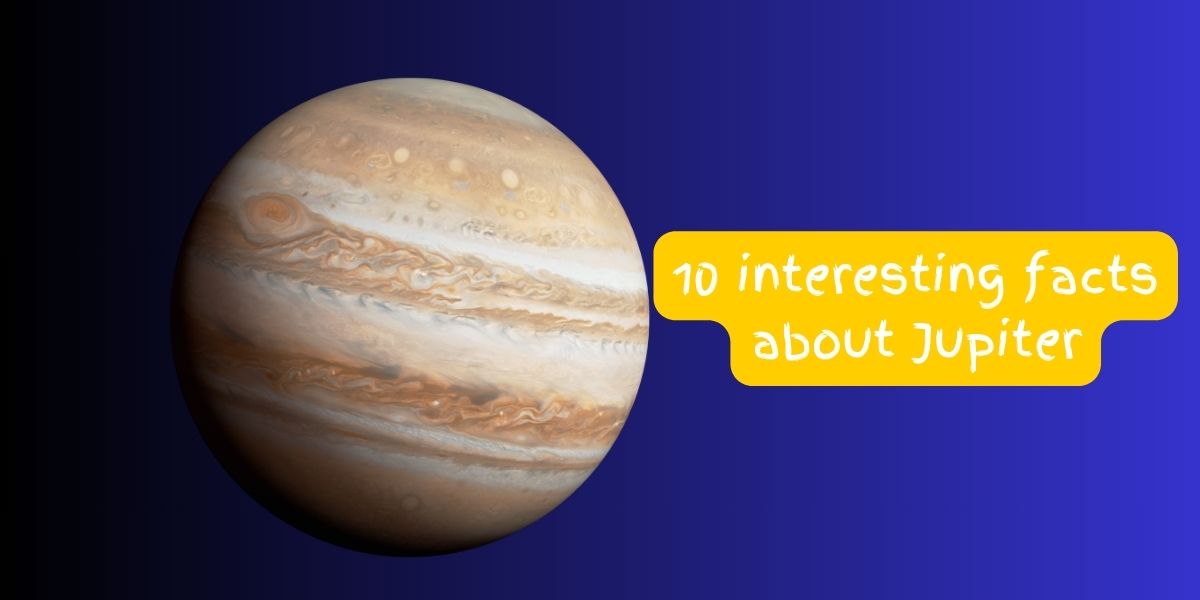Here are 10 interesting facts about Jupiter:
- Largest Planet: Jupiter is the largest planet in our Solar System, with a diameter of about 139,822 kilometers (86,881 miles), making it more than 11 times wider than Earth.
- Gas Giant: Jupiter is classified as a gas giant, primarily composed of hydrogen and helium. It does not have a solid surface like terrestrial planets such as Earth.
- Great Red Spot: Jupiter’s Great Red Spot is a massive storm that has been raging for at least 400 years. It is a giant anticyclonic storm larger than Earth, with winds reaching speeds of about 400 km/h (250 mph).
- Many Moons: Jupiter has at least 79 known moons, the largest of which is Ganymede, which is even bigger than the planet Mercury. Other notable moons include Callisto, Io, and Europa.
- Strongest Magnetic Field: Jupiter has the strongest magnetic field of all the planets in our Solar System, with a magnetosphere extending millions of kilometers into space. This magnetic field traps charged particles and creates intense radiation belts around the planet.
- Short Day: Despite its massive size, Jupiter rotates very rapidly on its axis, completing one rotation in about 9.9 hours. This rapid rotation causes the planet to bulge slightly at the equator.
- Rings: Jupiter has a faint ring system composed mainly of dust particles. While not as prominent as Saturn’s rings, Jupiter’s rings were first discovered by the Voyager 1 spacecraft in 1979.
- Galilean Moons: The four largest moons of Jupiter—Io, Europa, Ganymede, and Callisto—are collectively known as the Galilean moons, named after the astronomer Galileo Galilei, who first observed them in 1610.
- Gas Composition: Jupiter’s atmosphere is mainly composed of hydrogen (about 75%) and helium (about 24%), with traces of other elements such as methane, ammonia, and water vapor.
- Spacecraft Exploration: Jupiter has been visited by several spacecraft, including NASA’s Pioneer 10 and 11, Voyager 1 and 2, Galileo, and Juno missions, providing valuable data and insights into the planet’s atmosphere, moons, and magnetic field.
These facts highlight the fascinating features and characteristics of Jupiter, the largest and most massive planet in our Solar System.


No responses yet